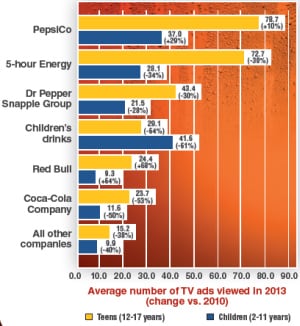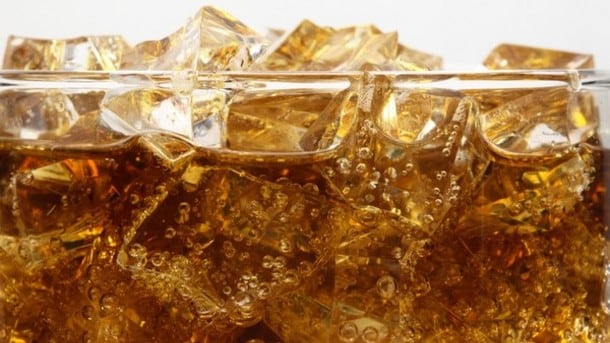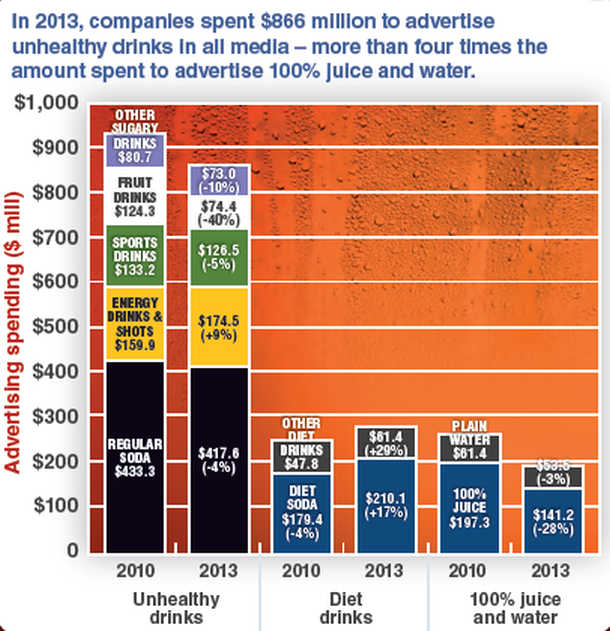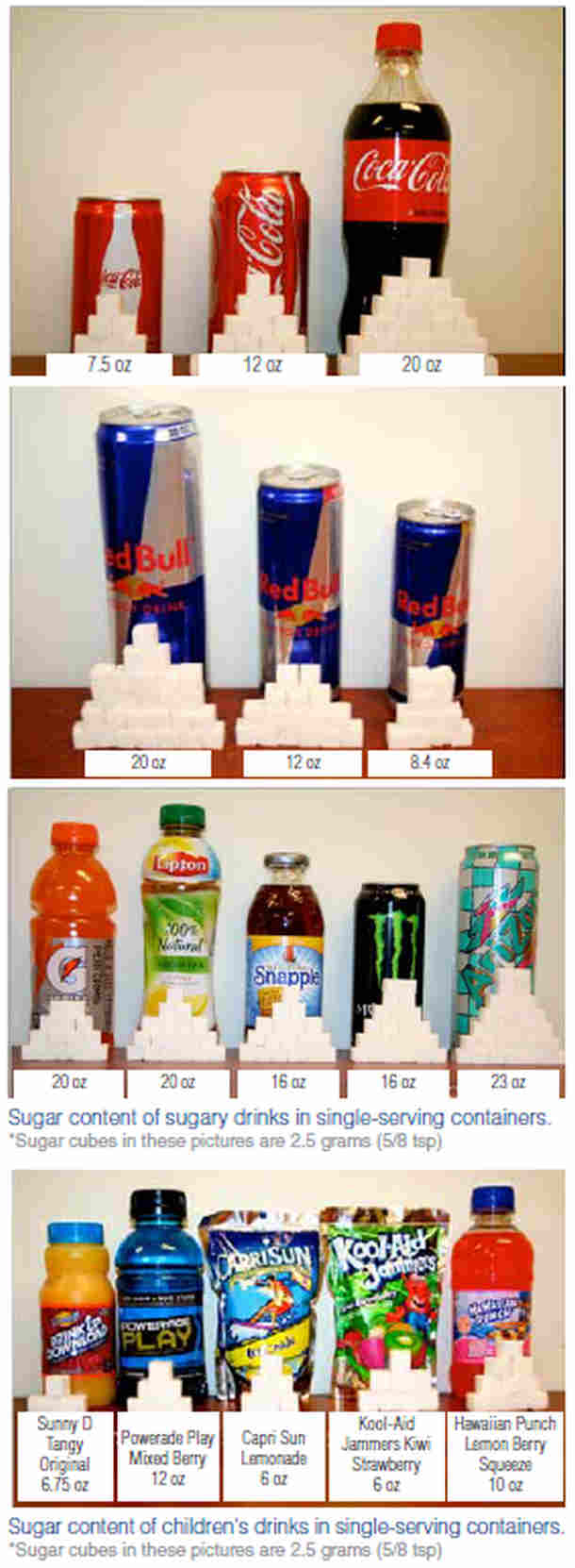According to Sugary Drink FACTS 2014, produced by the non-profit research and public policy organization The Yale Rudd Center for Food Policy & Obesity and funded by the Robert Wood Johnson Foundation, the industry made progress over the three-year period:
- Children ages 6-11 viewed 39% fewer TV ads for sugary drinks in 2013 than in 2010; teens ages 12-19 viewed 30% fewer ads; and sugary drink advertising on websites primarily visited by youth declined by 72%.
- Coca-Cola, Dr Pepper Snapple Group, and PepsiCo all added calories-per-serving on the front of most packages, and offered enhanced nutrition information on their websites.
However, soda giants had also redirected some of their cash into targeting children via “child-friendly advergame apps” such as Fanta Fruit Slam and Mtn Dew Baja or Bust; while product placement on shows such as America’s Got Talent (Snapple), American Idol (Coca-Cola), X Factor (Pepsi), and The Big Bang Theory (Sprite, 7UP, Monster Energy, and Red Bull), was on the rise, said the 232-page report.
It also found that:
- Preschoolers (2-5years) saw 39% more ads for PepsiCo’s sugary drinks in 2013 than in 2010; while children aged 6 to 11 saw 25% more. Meanwhile, Red Bull increased TV advertising to youth by 59%.
- One in three TV ads for sugary drinks viewed by teens - and one out of four such ads viewed by preschoolers and children - promoted energy drinks, which the American Academy of Pediatrics says “have no place in the diet of children and adolescents.”
- Beverage companies still spend four times as much on advertising sugar-sweetened beverages as they spend on 100% juice and plain water.
- Makers of sugary drinks and energy shots increased ad spending on Spanish-language TV by 44% in 2013 versus 2010.
- In 2013, Hispanic youth were 93% more likely to visit all beverage company websites compared with all youth. Meanwhile, Sunny D increased Spanish-language advertising by 18% in 2013 vs 2010, representing one-third of its TV ad budget.
Marlene Schwartz, PhD, director of the Rudd Center, acknowledged that the industry-backed Children's Food and Beverage Advertising Initiative (CFBAI) had driven positive change, but said that it only covered advertising “on a fraction of the TV shows and websites that youth see, and classifies children as adults the day they turn 12 years old [the CFBAI only regulates ads placed in TV and other media where 35%+ of the audience is made up of children aged 11 and under]".
She added: “Our children deserve to grow up in a culture where they are exposed to messages that promote health, not sugar and caffeine.”
Director of marketing initiatives and lead author Jennifer Harris, PhD, told FoodNavigator-USA: “Sales of soda are going down so everyone is battling for share of a declining market, and that can involve more advertising. A couple of years ago, Pepsi shareholders said they were not happy so they promised they would invest more in their core business, a key part of which is sugary soda, and that’s what they’ve done."

Dr Harris said she would like to see beverage companies stop marketing soda directly to kids, especially those that suffer disproportionately from diet-related diseases (Hispanic and black children and teens), and introduce more children’s drinks with “fewer than 40 calories per serving and no non-nutritive sweeteners”.
The CFBAI standards should also be expanded to include all forms of marketing to children up to age 14, added Dr Harris, who said she welcomed initiatives such as the Berkeley soda tax and FDA proposals to include added sugar on the Nutrition Facts panel.
She added: "Even though children’s fruit drinks often come in smaller 6-7oz containers, two-thirds of these drinks contain more than 15g of sugar, the maximum amount that children should consume in a day, and one-third contain 20g or more.
“I think if parents see a juice drink that has 20g of sugar and they see that 18g of that is added sugar, I think that could be really eye-opening.”
PepsiCo is, and will continue to be, a responsible marketer, particularly when it comes to children
However, PepsiCo said it was disappointed that it had been singled out in the summary of the report, adding: "Selectively presenting information and failing to place it in proper context makes for sensational headlines, but it is misleading.
"The truth is that PepsiCo is, and will continue to be, a responsible marketer, particularly when it comes to children. The truth is that we do not advertise on any programs geared to children 12 and under. The truth is we were one of the first companies to adopt industry guidelines that restrict advertising to children, and we are 100 percent compliant with those pledges."
American Beverage Association: Obesity will not be solved by singling out any one product or industry
Meanwhile, Chris Gindlesperger, senior director of public affairs at the American Beverage Association, told us that the Rudd report did “not adequately differentiate between marketing to children, who are widely viewed as a special audience needing particular care, and marketing to teens and general audiences”.

He added: “Obesity is a complex issue that will not be solved by singling out any one product or industry. The people at our member companies – many of whom are parents themselves – are delivering on their commitment to advertise only water, juice and milk on programming for children under 12.
“In fact, research conducted by Georgetown Economic Services found that there has been a dramatic change in food and beverage advertising during children’s programming, with advertisements for soft drinks decreasing by 96% between 2004 and 2010 alone.”
Click HERE to read the report.


